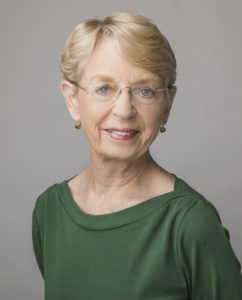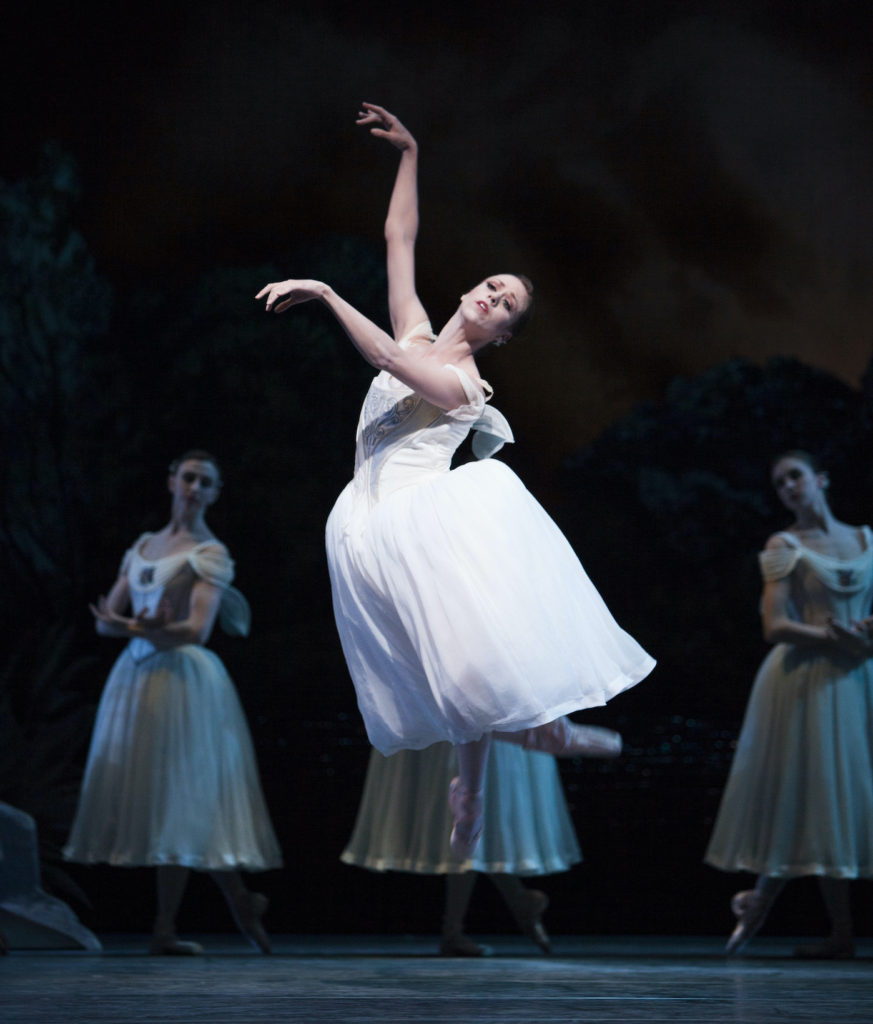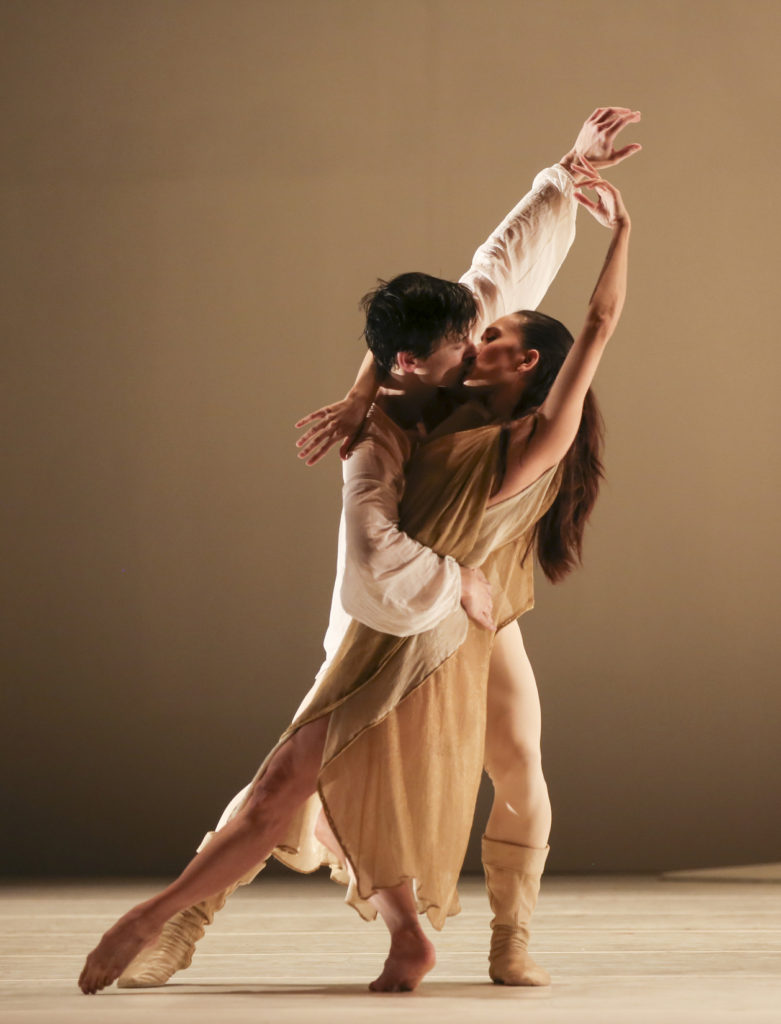Pacific Northwest Ballet Turns 50: The complexities of success - Vancouver Ballet Society
- Home
- Features 2020 - 2023
- Pacific Northwest Ballet Turns 50: The complexities of success

By Marcie Sillman
When Kent Stowell and Francia Russell arrived in Seattle in 1977 to take the reins of a five-year old ballet company, they had one big goal: “We wanted to make a company and a school that we would be proud to be part of as dancers,” Russell recalls. Forty-five years later, the founding artistic directors of Pacific Northwest Ballet (PNB) have accomplished that goal, and more. As PNB heads into its 50th artistic season this fall, the company boasts almost 40 dancers on full-time contract, its own critically-acclaimed orchestra, and a thriving ballet school that serves hundreds of students in two Seattle-area locations. Many consider PNB to be one of the top ballet companies in the United States.

The PNB of 2022 is a far cry from the company Russell and Stowell found when they arrived in Seattle. The Pacific Northwest Dance Association, as it was called, was an arm of Seattle Opera. It had very few dancers, a haphazard class schedule, and very little money to improve either situation. “The place was chaos,” Russell says. “But we looked around, evaluated the situation and said, ‘Here we are with our three little kids!’ So we rolled up our sleeves and got to work. It was like climbing Mount Everest!”
Stowell began a search for dancers, auditioning anyone with training or at least the potential to be a dancer. “We hired one part-time,” says Stowell. “He was a surfer. He’d taken some ballet to help his surfing!”

Russell was charged with crafting the curriculum for a school that ultimately would produce new generations of homegrown artists. She had just one week to craft a syllabus. Despite the magnitude of the challenge, within a year Russell had developed a curriculum designed to train a cadre of professional dancers. During that same year, she and Stowell also negotiated the company’s independence from Seattle Opera, rechristening themselves Pacific Northwest Ballet.
A decade later, with two dozen dancers under contract, PNB was touring up and down the West Coast, had performed in Asia, and made its New York debut. The budget was still bare bones, so PNB relied on repertoire created by Stowell, as well as a healthy selection provided free of charge by New York City Ballet founder George Balanchine. Both Stowell and Russell had danced for Balanchine at NYCB, where Russell also served several years as ballet mistress.
Despite the couple’s best efforts, in those early years PNB dancers didn’t necessarily have the technical skills to perform all of Balanchine’s works. “We were very careful what we asked Mr. Balanchine for,” says Russell. “We only asked for things we felt the dancers could do.”

Now there’s very little PNB dancers can’t do, from Balanchine’s Jewels to Stowell’s 1983 rendition of Swan Lake (PNB’s first certified hit), to contemporary works created by such in-demand dancemakers as Twyla Tharp, Alexei Ratmansky, Christopher Wheeldon, and Crystal Pite.
Principal dancer Lesley Rausch, currently PNB’s most senior company member, trained with the PNB School’s Professional Division under Russell’s tutelage. She’s just one of dozens of homegrown dancers to fill the company ranks over Stowell and Russell’s 28-year tenure. Rausch first came to PNB at age 15 for a summer course; this season marks her 21st year with the company. “I’ve lived my entire adult life in Seattle, dancing for PNB,” Rausch muses. “It feels like family in so many ways.”

Rausch is known for her elegant technique, and her mastery of classic roles in such ballets as Swan Lake and Giselle. But under current artistic director Peter Boal’s leadership, Rausch has also been featured in contemporary work by such choreographers as Alonzo King and PNB’s choreographer-in-residence Alejandro Cerrudo. “I can’t say that if PNB had the repertoire then that it does now that it would have felt like the right place for me when I joined the company,” Rausch muses. “But it has expanded my horizons, and I’ve done things I never expected to dance.”
“The number of new works we commission has ramped up,” acknowledges Boal, who took the reins from Stowell and Russell in 2005. In addition to Cerrudo’s residency, and an on-going artistic relationship with Tharp, Boal has acquired multiple ballets from such artists as Jessica Lang, Penny Saunders, and Annabel Lopez Ochoa. He believes audiences need to see more than a single work by any given choreographer to gain an appreciation for their artistic vision. “Otherwise you’re going to get this sort of penny-candy-store experience,” he laughs, “where there’s too much to choose from. And the sum total of that diet isn’t healthy.”
Before Boal came to PNB, he was a principal dancer with New York City Ballet. Like Stowell and Russell, he was steeped in Balanchine’s choreography. But from his first season in Seattle, Boal set out to shake up the company’s repertoire. Slowly, he winnowed out many of Stowell’s ballets, perhaps most controversially replacing his Nutcracker, with sets and costumes by Maurice Sendak, with Balanchine’s 1954 version, with newly commissioned designs by another children’s author/illustrator, Ian Falconer. The change ruffled both Stowell and Russell’s feathers, as well as many longtime audience members. But, almost seven years later, the Balanchine holiday classic is here to stay.
Changes at PNB transcend new repertoire. Like artistic organizations across the United States, the company has tried to respond to resounding calls for racial equity in the wake of George Floyd’s murder by Minneapolis police officers in May 2020. PNB had already been trying to diversify both its artistic and administrative staff, but according to Boal, the efforts are now a central focus.

Most visible to audiences are increased numbers of dancers of colour in the company ranks; Boal has publicly discussed a goal of 50 percent BIPOC dancers. PNB also is working to “de-gender” ballet; in late 2021, newly-hired apprentice Ashton Edwards, who was born male but identifies as non-binary, took the stage en pointe as one of the Nutcracker Snowflakes. Boal and his artistic staff have started to refer to roles as pointe-shoe and flat-shoe, rather than male or female. The PNB school plans to open training in pointe technique and partnering to serious students irrespective of gender.
“I really give Peter a lot of credit for that,” Rausch says. “When you’re working in an industry that’s so steeped in tradition, to be able to step outside that box takes a lot of courage. I think it’s for the benefit of the company, and the community as well.”
Despite what Rausch and Boal see as progress at PNB, more than two years into the pandemic Boal is concerned about the company’s financial future. Although PNB performed for in-person audiences last season, attendance was capped to allow for social distancing in the company’s home theatre, Marion Oliver McCaw Hall, which can seat approximately 3,000. Government and private funds helped bridge the funding gap, but public relief money for the arts is dwindling. Like every performing arts organization in the U.S., PNB needs to draw larger paying audiences.
“You’re not back until you rebuild what you once had,” Boal says, referring specifically to in-person ticket sales. “We built a digital audience during the pandemic, but it doesn’t equate financially to what we were doing three years ago.”

Last season, to lure back pandemic-leery patrons, Boal programmed some of the company’s biggest hits, including Stowell’s Swan Lake and Jean-Christophe Maillot’s Roméo et Juliette. Kent Stowell sees that as a good first step. “You can do all the modern stuff, but people are going to come to Sleeping Beauty and Swan Lake,” he says.
Nevertheless, Pacific Northwest Ballet’s 50th anniversary season includes a healthy helping of new works, which Boal believes to be the foundation of the company’s future. PNB’s artistic roots are also represented. The season kicks off on September 23 with Stowell’s Carmina Burana, Balanchine’s Allegro Brillante, and a world premiere by Alexei Ratmansky. Other season highlights are the company’s 2011 reconstruction of Giselle in February 2023, and Balanchine’s adaptation of A Midsummer Night’s Dream in April.
No doubt Kent Stowell and Francia Russell will be in the audience where they can point with pride to the achievements under their watch: new company offices and studios in Seattle; the renovation of McCaw Hall; construction of a satellite school facility in suburban Bellevue, and a professional ballet training program that has produced dozens of dancers like Lesley Rausch. Russell, when we spoke, did confess to a list of unfinished goals. Still, the duo fulfilled their original mission: creation of the kind of ballet company they would be proud to dance for.

